Explore The National Parks Of The Chesapeake
Visit a region that has witnessed some of the most pivotal moments in American history
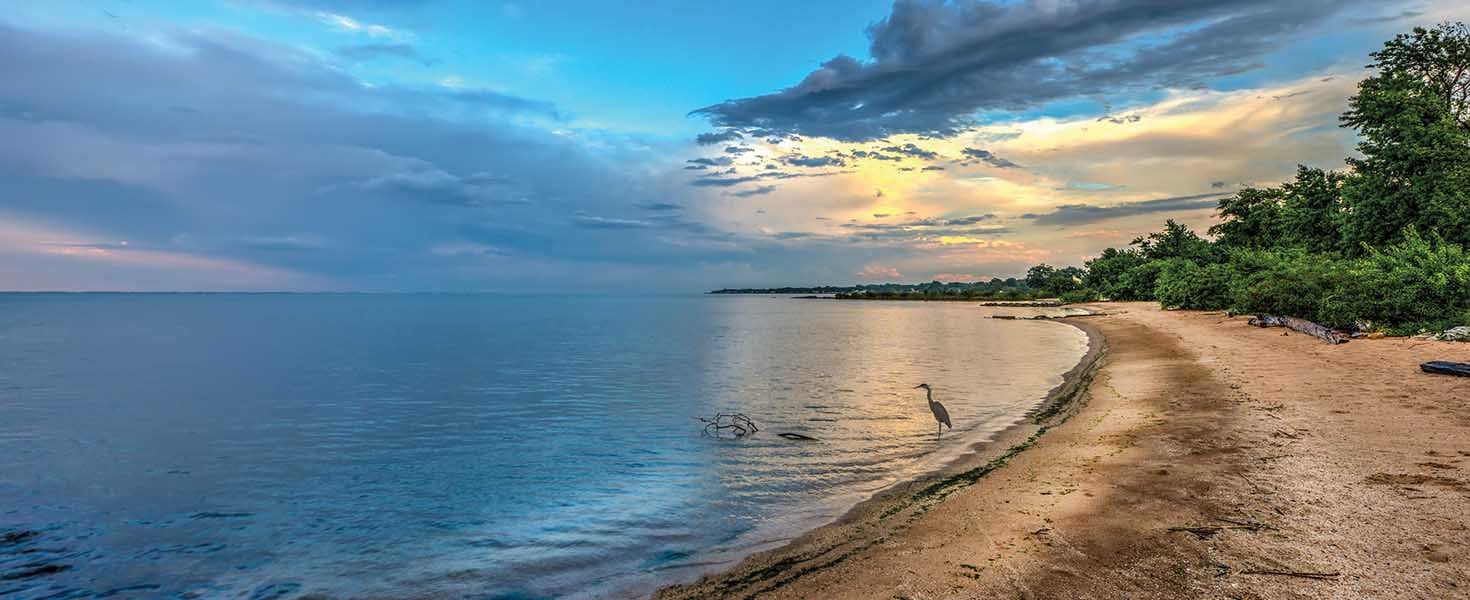
Visit a region where wild horses run free, yet has witnessed some of the most pivotal events in American history. This serene area of coastal beaches and bucolic rural farms (and one major port city) was also the home of patriots and heroes who risked their lives and health for the freedom of others. George Washington and Harriet Tubman were both born in this region. Here, native people first encountered English colonizers. Two centuries later, “bombs bursting in air” failed to seize a port city from a newly independent nation. Freedom is in the salt sea air, for horses and humans alike.
- Four centuries ago, the native people—who still live in this area—met an English captain struggling to start a colony.
- Enter a fort that the world’s most powerful navy was unable to conquer in a battle that inspired our national anthem.
- Experience the birthplaces of great Americans—one who led a nation to freedom from a colonial power, the other who led enslaved Africans to freedom.
- Meet a signer of the Declaration of Independence, a reluctant rebel who risked all to follow his conscience.
- Set up your tent on a barrier island and explore sandy beaches, salt marshes, maritime forests and coastal bays. Oh, yes, and see wild horses roam free.
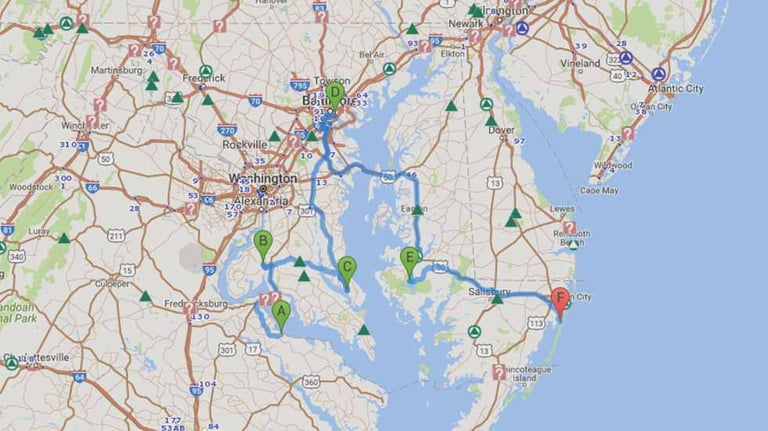
Day 1: Birthplace of Patriots
George Washington birthplace national monument and Thomas stone NHS
While the name of George Washington is known by every schoolchild, the struggle for independence also depended on patriots who agonized over parting with the “mother country.” Men like Thomas Stone risked his fortune making a choice that sacrificed his health and shortened his life.
Visitor Center
1732 Popes Creek Road
Colonial Beach, VA 22443
804-224-1732
www.nps.gov/gewa
Fee free site:
No seasonal closures currently, subject to change. Open seven days a week. Visitor Center open 9 am to 5 pm. Park recommends arriving by 4 PM. Closed Thanksgiving, December 25 and January 1.
Although many locations can claim “George Washington slept here,” only George Washington Birthplace National Monument can claim “He Slept Here First!” George Washington Birthplace is located off two miles from Virginia Route 3 on Virginia Route 204. The park is located 38 miles east of Fredericksburg and 10 miles from Colonial Beach.
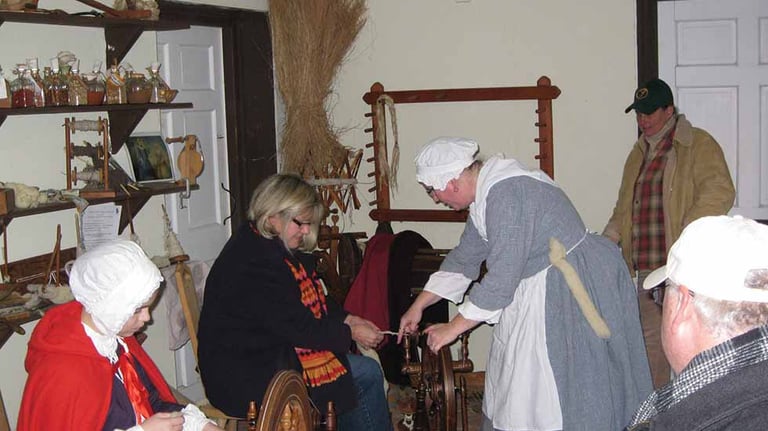
More:
Born here at Popes Creek Plantation in 1732, George Washington only lived here for a few years, but it was here that he began to form his deep, lifelong commitment to the land and the Virginia tidewater culture that his family was solidly entrenched in. Today’s visitor, although greeted by no remaining structures belonging to the Washington family, will nonetheless gain a greater understanding of the character of the man as you roam through the spacious grounds, past the rows of tobacco and flax and through the cedar groves to the foundation of Washington’s birth home. Key features: foundation of the home where Washington was born, Memorial House, Washington Monument, Family Burial Ground, Potomac River Beach.
Insider tip:
Notice the ditches on the side of the road as you make your way to the burial ground and beach? These ditches were dug by the Washington family’s enslaved population. Apart from the graves in the burial ground, they are the only tangible evidence of the Washington period of occupation. They will do your car no good, so please drive no higher than the speed limit and be careful!
Fun facts:
The Washington Birth home was destroyed by fire on Christmas Day 1779. This was the coldest winter of the century. Because of the cold weather, the fire burned so slowly that items were able to be removed and transported across the frozen Popes Creek.

Thomas Stone National Historic site
Travel information:
Take Virginia 301 and 3, then Maryland 301. It’s a bit longer but a lot simpler than more direct routes.
Visitor Center
6655 Rose Hill Road
Port Tobacco, MD 20677
301-392-1776
www.nps.gov/thst
Fee free site:
Open Thursdays through Sundays from 10 a.m. to 4 p.m. from March to December; Closed January and February.
Even the quietest Founding Fathers risked their lives, fortunes and honor by signing the Declaration of Independence. Thomas Stone, the youngest delegate from Maryland, was 33 years old when he signed the document. In doing so he sacrificed many things, including his health for the fledgling nation. As a member of the Continental Congress he also helped frame the Articles of Confederation, the nation’s first form of government before the Constitution.
More:
Thomas Stone National Historic Site’s 328 acres include Stone’s house, Haberdeventure; numerous 18th and 19th century structures and the family burial ground; the final resting place of the quiet Patriot. Key features include: a Burial Ground, Stables, Corn Crib, Tenant House, Tobacco Barn.
Fun fact:
The brick work seen near the main house, Haberdeventure, are the remains of a retaining wall of a formal garden planted by the last owners in the 1950s. They are not the remains of an 18th century structure as is widely assumed.

Day 2: Captain John Smith Chesapeake National Historic Trail and Fort Mchenry National Monument & Historic Shrine
Travel information:
56 min, 42 miles via MD-231 to Solomons Island Road S
10515 Mackall Road
Saint Leonard, MD 20685
410-586-8500
www.nps.gov/cajo (Captain John Smith Chesapeake)
www.jefpat.org/(Jefferson Patterson Park and Museum)
Fee free site:
Open 7 days a week from 10 AM - 4:30 PM from March 1, 2016 through November 6, 2016. November 7, 2016 - March 3, 2017: open M-F, 10 AM- 4 PM; closed weekends, State Holidays, Thanksgiving week and Christmas week. Park grounds and trails are open all year from 7:30 until dusk except for Thanksgiving, Christmas and New Year’s Day.
Captain John Smith Chesapeake National Historic Trail weaves its way through several states, connecting dozens of sites worth well your time. One of them is Jefferson Patterson Park and Museum, a 560-acre Maryland state park along the shoreline of the Patuxent River. The State Museum of Archaeology is located there as well.
Jefferson Patterson Park and Museum explores the changing cultures and environment of the Chesapeake Bay region of the past 12,000 years. Visitors can experience the Captain John Smith Chesapeake National Historic Trail by exploring thousands of years of human history and touring the park’s archaeological sites and recreated American Indian town; paddling the Patuxent Water Trail and seeing the river as Captain John Smith did—from the water—and; viewing the variety of birds and other wildlife that make their home in the park.
More:
The park features miles of trails, acres of working farmland, a reconstructed “Indian Village,” restored farm buildings and museum exhibits, and educational programs. The park’s canoe and kayak launch site allows visitors to explore the Patuxent River. More than 70 archaeological sites have been identified at the site, from the prehistoric period 9,000 years ago through the Colonial period, and including the site of the 1814 Battle of St. Leonard Creek—the largest naval engagement in Maryland's history. (That’s bigger than the naval battle in Baltimore!)
Fun fact:
Captain John Smith and his crew spent only two and a half days on the Patuxent. They visited in August 1608, as part of the second Chesapeake Bay voyage. Although Smith doesn’t write much about their time on the river, his map provides important information. It shows the Native leader’s town at Patuxent at the head of today’s Battle Creek, as well as more than a dozen towns of the Patuxent people. Smith wrote that the chief treated them kindly and that “the people we found very tractable and more civil than any.”
Insider tip:
The park has three audio tours, accessible via cell phone, that highlight aspects of the park’s history. “Walking in their Footsteps: A Patuxent Community” focuses on a replica native Village. “1812 Remembered” highlights the effects of the War of 1812 on southern Maryland.
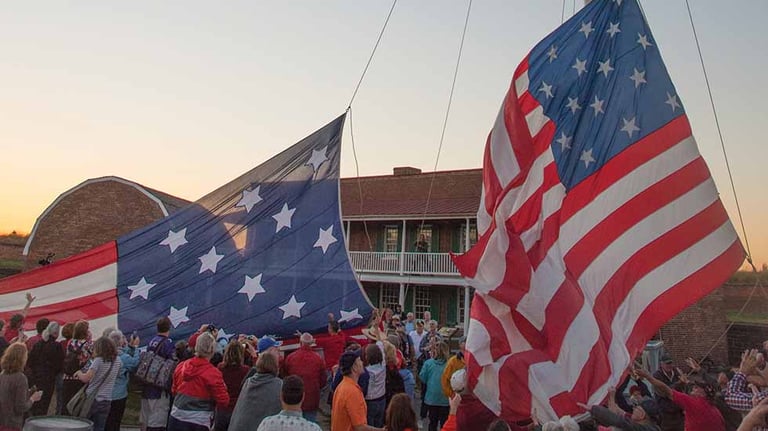
Fort McHenry National Monument & Historic Shrine
Travel information:
1 hr, 34 min 75 miles via MD-4 WVisitor & Education Center
2400 East Fort Avenue
Baltimore, MD 21230-5393
410-962-4290, x250
www.nps.gov/fomc
Entrance fee: adults $10; children 15 & under free. There is no charge to stroll the grounds and explore the Visitor Center. Hours: 9:00 a.m. to 5:00 p.m. every day except January 1, Thanksgiving, December 25. From Memorial Day to Labor Day the site is open until 6:00 p.m.
“O say, can you see” a large red, white and blue banner over this star-shaped fort? On fair weather days, you might see a full-sized replica of the original 15-star, 15-stripe Star-Spangled Banner, which now hangs in the Smithsonian. That was the banner seen by Francis Scott Key during the War of 1812 in a 25-hour British attack on September 13-14, 1814. The sight of that banner, still “gallantly streaming” when the attack was over, inspired Key to write “The Star-Spangled Banner.” Stroll the ramparts and the parade ground and understand what moved Key to write what is now our national anthem.
More:
The park’s award-winning introductory film orients visitors to the “rocket’s red glare, the bombs bursting in air.” You can even sing along with the U.S. Naval Academy Glee Club. Self-guided tours through the 18th century star-shaped fort reveal historical and military memorabilia in the barracks, officers’ quarters, guardhouses and powder magazine.
Insider tip:
Begin your visit in the park’s Visitor and Education Center by exploring its interactive exhibits on the War of 1812, the Battle of Baltimore and our national anthem writer. Check out the 10-minute introductory film, then join a Ranger or Volunteer for an interpretive program.
Fort McHenry’s brickwork radiates heat in the summer. If that’s the season when you take your trip, arrange to come in the morning if possible.
Fun facts:
Fort McHenry was named for James McHenry, a prominent Marylander who served as Secretary of War under Presidents Washington & Adams and a signer of the U.S. Constitution.
Fort McHenry was garrisoned by Union troops during the Civil War, serving as a prison camp for 23,000 Confederate Prisoners of War (POWs) and 2,000 Southern sympathizers—including Francis Scott Key’s grandson.
Out of more than 400 National Park Service sites, Fort McHenry is the only one designated as a “National Monument and Historic Shrine.”
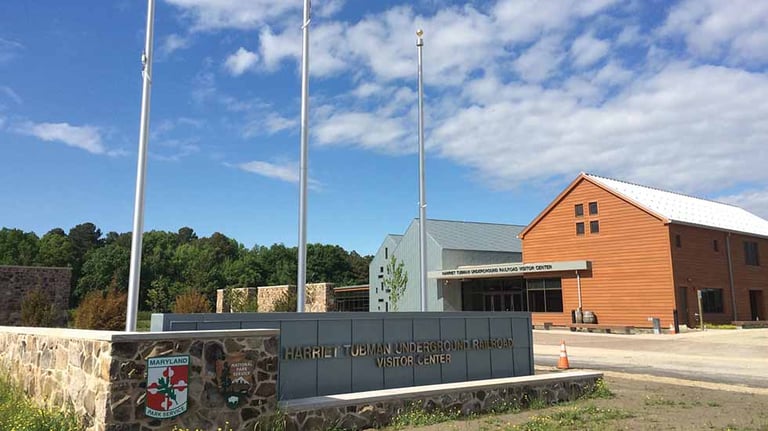
Day 3: Harriet Tubman Underground Railroad National Historical Park
Travel information:
1 hr 50 minutes, 99 miles via Interstate 97 south to US-50 east 4068 Golden Hill Rd.Church Creek, MD 21622
410-221-2290
http://dnr.maryland.gov/publiclands/Pages/eastern/tubman.aspx
Fee free site:
open seven days a week except January 1, Thanksgiving, December 25. The Visitor Center is open from 9 am to 5 pm. Park recommends arriving by 4 pm. The park grounds are open from sunrise to sunset.
Harriet Tubman may have been born into enslavement here in Dorchester County, but its chains could not bind her. As an adult, she not only freed herself through escape but returned, risking her life again and again to guide nearly 70 people to freedom in the North. She is the Underground Railroad’s best known “conductor.” During the Civil War she served as a Union Army cook and nurse and later as a spy. After the war she was active in the struggle to win women the right to vote. Become inspired by her work as a freedom fighter, liberator, leader, and humanitarian. A deeply spiritual woman, Tubman experienced vivid dreams and visions that she believed were revelations from God.
More:
A National Park Service site nearby is still in the planning stages, but the state of Maryland has a visitor center opening March 10, 2017. The Harriet Tubman Underground Railroad Visitor Center offers an interpretive video as an introduction. Visitors can immerse themselves in exhibits depicting her early years in Maryland and a rescue mission on the Underground Railroad. Outside the Center, a walking path through the memorial garden offers a place for quiet reflection and meditation.
Insider tip:
The Legacy Garden features plants that are native to the Eastern Shore of Maryland, showcasing native trees with seasonal interests, such as spring blooms and vivid fall colors.

Fun fact:
Visitors will notice that the visitor center has four components, which are modeled after local architectural themes. The first “building” includes the library, museum store, and restrooms. The three northern “buildings” feature the exhibit spaces, but they also symbolize the three fates of the enslaved people who lived in the region: be sold; stay in fear for being sold; run away.
If you have time:
Visitors can spend an entire vacation following in Tubman’s footsteps. The Harriet Tubman Underground Railroad Byway features more than 30 sites along a 125-mile self-guided driving tour. Nearby sites include the Bucktown Village Store, where Tubman was nearly killed by a blow to her head from an iron weight thrown by an angry overseer. Stanley Institute, a one-room schoolhouse used into the 1960s, stands as a testament to the African-American community’s determination to educate their children.

Assateague Island National Seashore
Travel information:
1 hr 50 min, 93 miles via US-50 west to Ritchie Hwy south
Visitor Center (Maryland side)
11800 Marsh View Lane
Berlin, MD 21800
410-641-1441
www.nps.gov/asis
The park is open year round, with more limited hours of operation off-season. Check the website for when the Visitor Center is open.
Fee site:
Fees depend on which state you are entering: your method of entrance (on foot, by car, etc.) and more. See www.nps.gov/asis/planyourvisit/fees.htm for details. Open year round, but check for the approach of coastal storms, which may close access to these barrier islands.
Want to live on the edge, at least for a day or so? Visit a place recreated each day by ocean wind and waves. Life on Assateague Island has adapted to an existence on the move. Explore sandy beaches, salt marshes, maritime forests and coastal bays. Rest, relax, recreate and enjoy some time on the edge of the continent. The more time you spend, the better you’ll appreciate the Delmarva (Delaware, Maryland, Virginia) way of life.
More:
This itinerary directs you to the Maryland side of Assateague Island. However, you are just as welcome to drive to the Toms Cove Visitor Center at 8586 Beach Road, Chincoteague, VA 23336. For more information, call (757) 336-6577.
Assateague Island National Seashore includes a barrier island stretched as thin as salt water taffy, from Maryland down to parts of Chincoteague Island in Virginia. It offers camping, fishing, kayaking and something rare for a National Park Site: hunting. But it is best known for its most unusual feature: wild horses. This is their home; please, stay in your car for your safety and for their safety, too.

Key features include: a natural undeveloped barrier island; natural terrestrial and aquatic habitats and species uniquely adapted to the coastal environment; high quality estuarine and marine water resources and, lest we forget; free-roaming wild horses.
Insider tip:
Horses are unpredictable. To avoid hitting them with your car, stick to the speed limit. It’s a good idea to go even a bit slower than that!
Enjoy the beautiful horses that live here at a safe distance. Assateague's horses are beautiful, tough, and wild, having learned to survive in a harsh environment. Every year visitors are kicked, bitten and knocked down while trying to feed or pet them. Horses that learn to beg for food can get sick from human food and are more likely to be hit and killed by cars. Give the horses the space to be wild.
Fun fact:
Assateague's wild horses are descendants of livestock brought to barrier islands as early as the 1700s to graze and to avoid fencing laws and taxation of livestock on the mainland.
